
Original Designs for 1902 OR 1910 depictions of same character: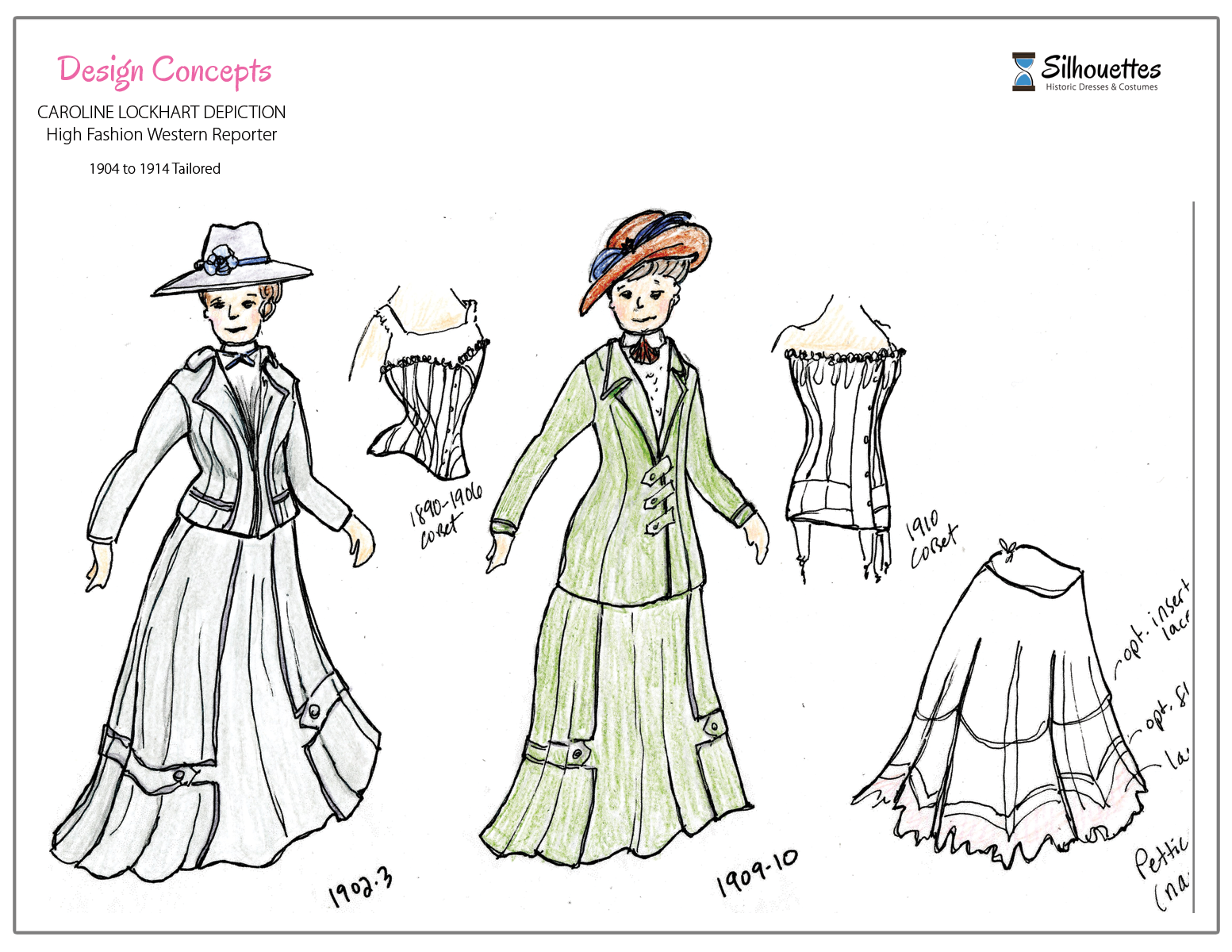
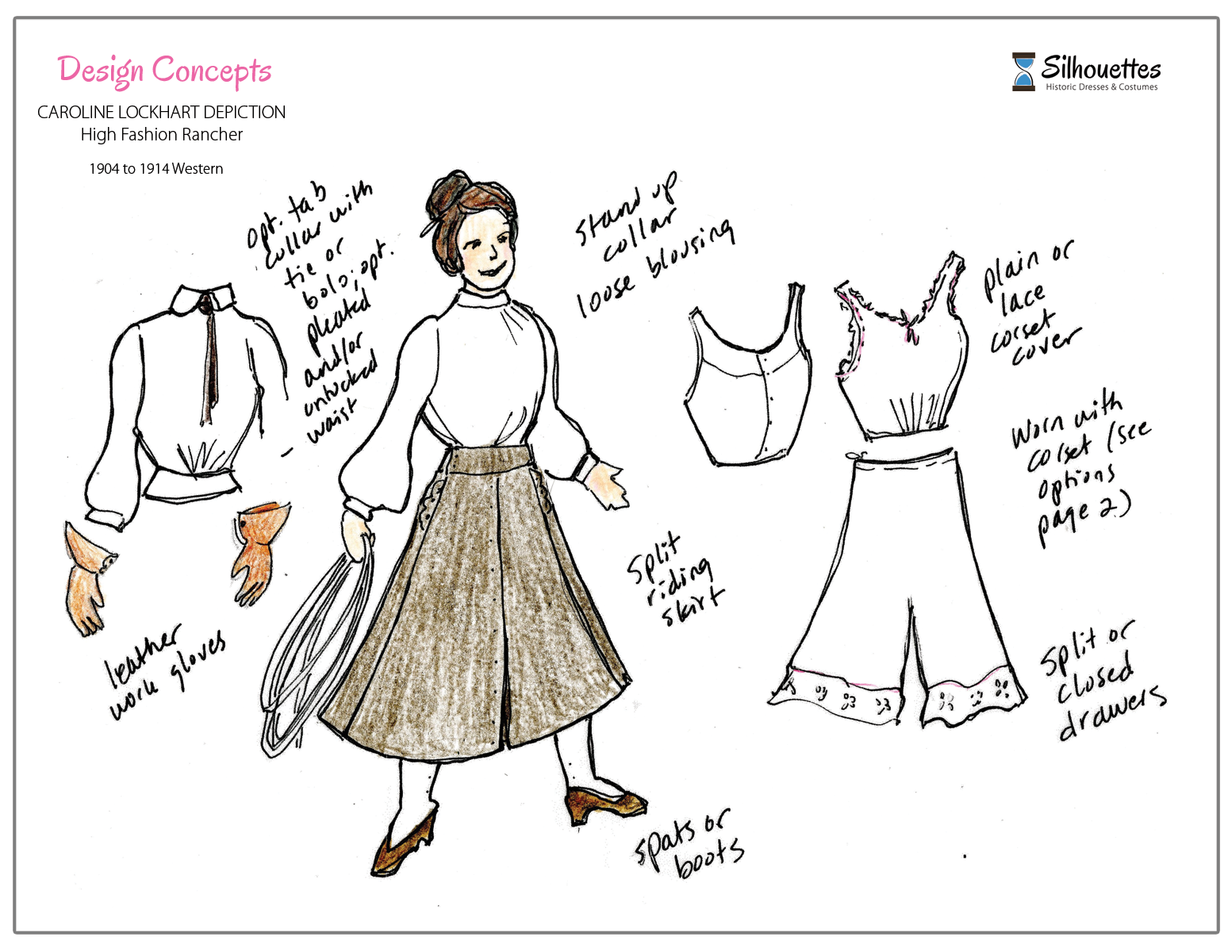

Corsets & Undervests
General for Era
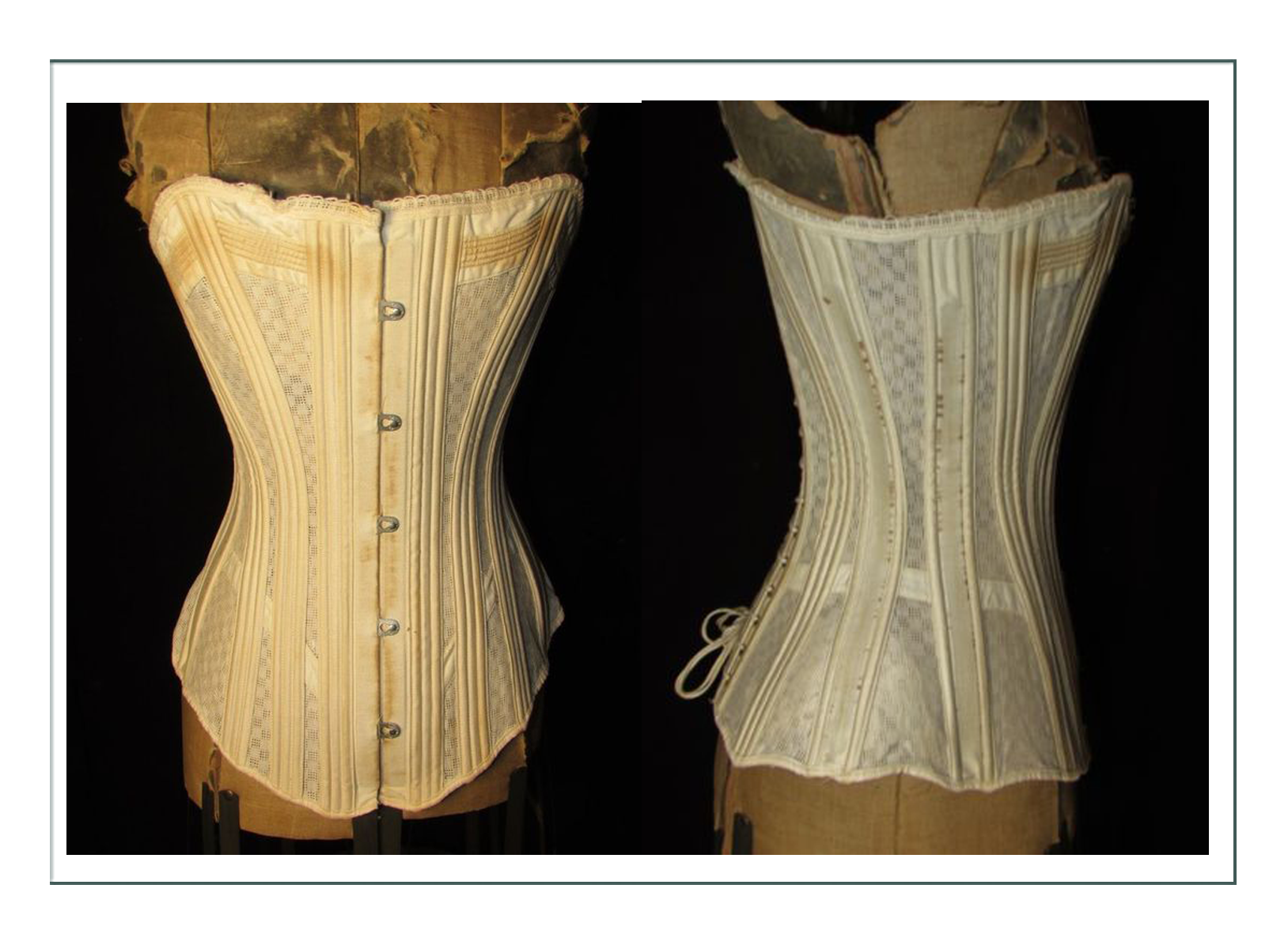
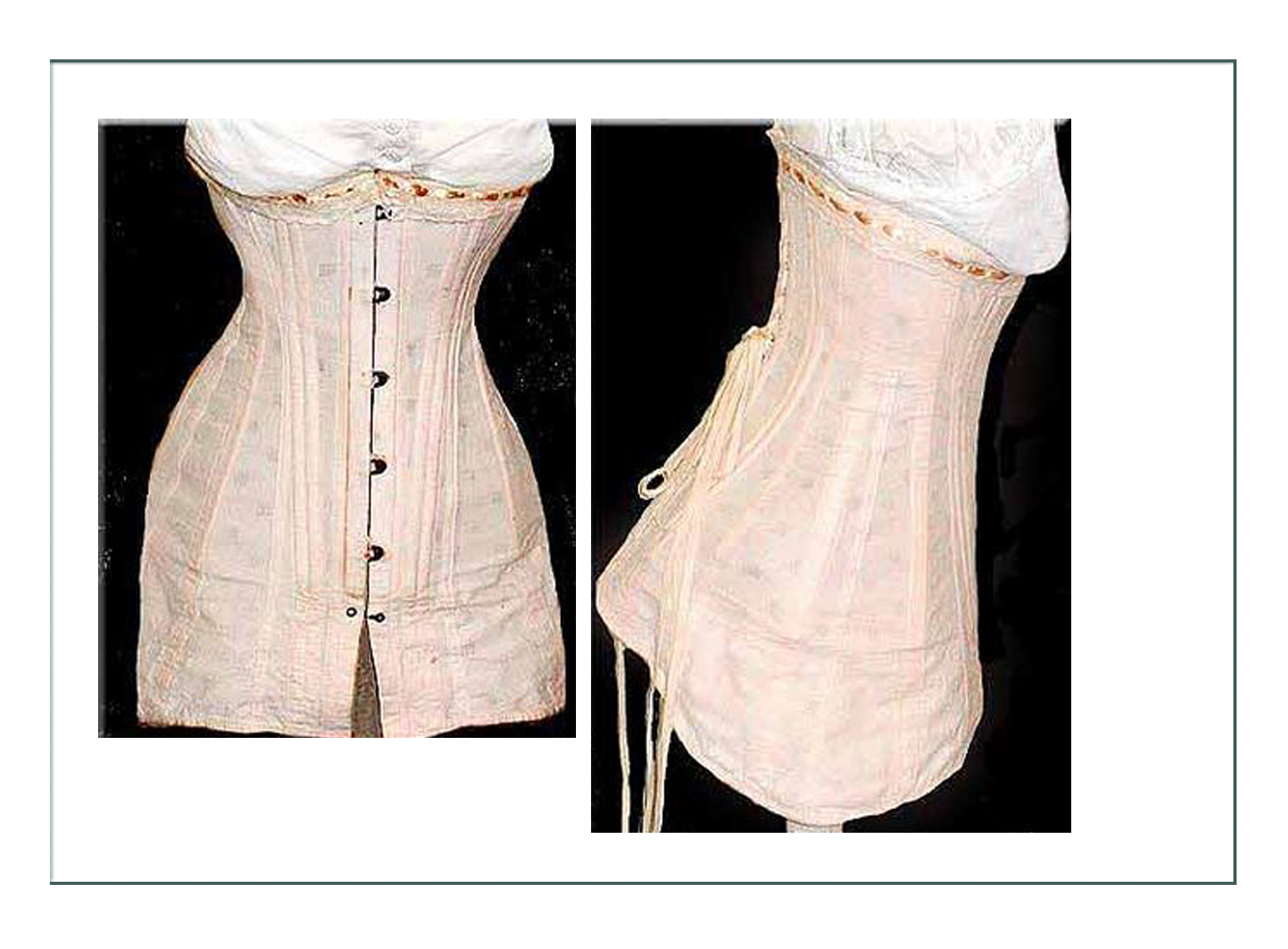
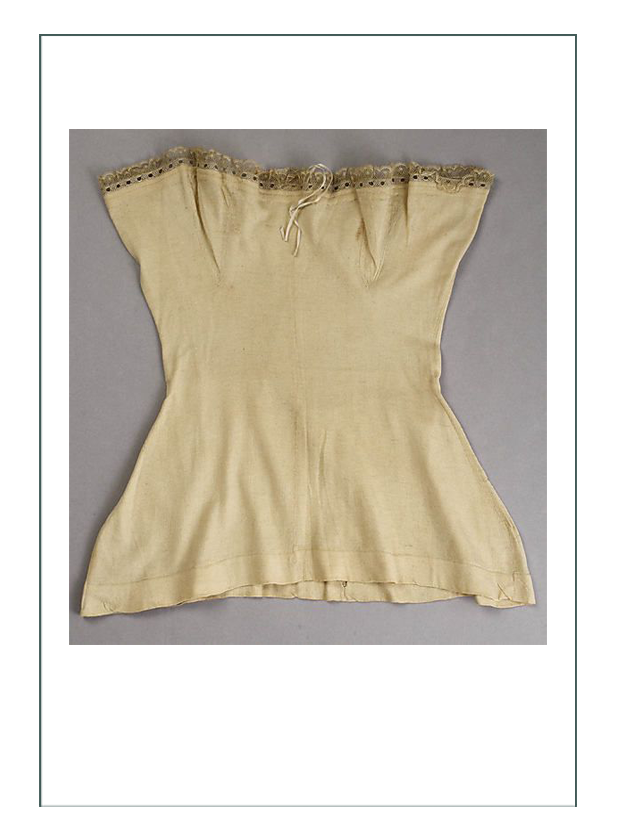
Corsets Specific to Character, Place, & Depiction
The 1909 corset was Edwardian, and had “curves” (waist cinching and angled bones). Suddenly, in 1910, it switched to the very long shaping and smoothing corset without waist cinching. These were very basic, plain, simple, cheap, and mass produced. We believe Carolie Lockhart would have two corsets – one on the cutting edge of fashion for meetings and public appearances; and an older short and waist cincher for riding and working on the ranch.
This depiction centers around the corset – everything is designed to enhance the long smoothe line of 1910 as it changes out of 1909. Further projects can focus on riding skirts and corsets; but not at this time.
The petticoat is right on the edge of fashion too with the long silhouette and dropped waist as 1910 headed into 1912 Titanic and 1915 with very long waists. We have simplified the inserts and lace found on extant garments to that which a western woman might order from the catalog or even make herself. We assume Caroline Lockhart did not do much sewing between running a ranch, a bar, the rodeo, the newspaper, and writing books. We do know her early ensembles were not “tailor made”, but homemade by someone. We bet Caroline found someone to sew for her as a barter (or blackmail?)
Authentic Photos & Reproduction underwear ensembles we are aiming for:
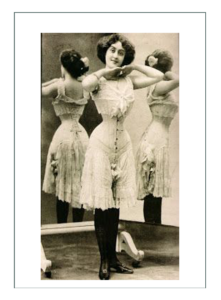
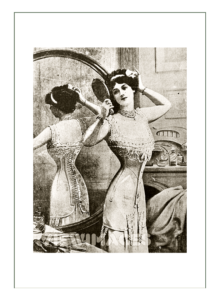
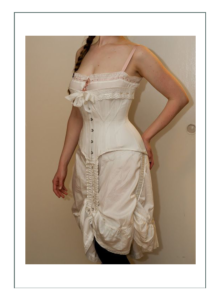
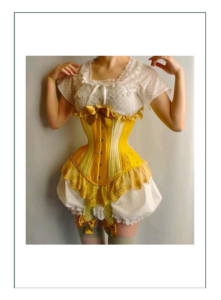
Extant Corsets
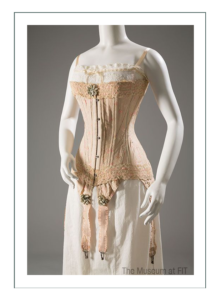
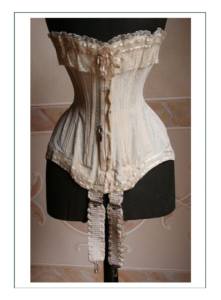
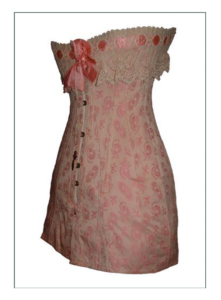
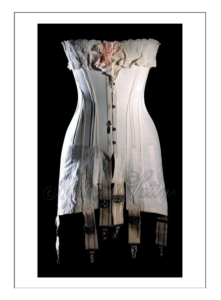
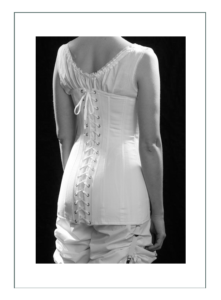
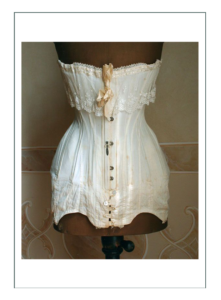
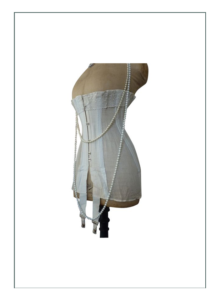
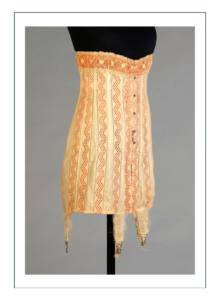
Drawers Pretty much the same as before – Basic
There were still not “panties”, and as petticoats became lighter and lesser, and corsets became less structured, they had to wear SOMETHING underneath. Split drawers were still worn until women went into pants in the 1915’s, and they were pretty basic – less frilly than the Edwardians wore closer to 1900.
Extant Examples we used to build from:
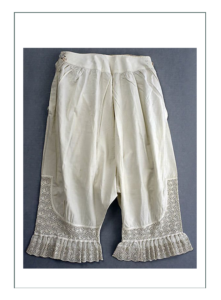
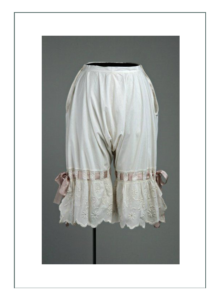


Petticoats/Slips specific too
Petticoats were called slips now. They replaced the corset cover which went over the corset and the combination of Edwardians that went under it – to give a smoothing line and very simple plain garment to go on top of everything. Underneath, she still wore drawers and an undervest that were washable as the bottom layer.
In general, they were decorated with lace, cotton or silk, and very simple and vertical in silhouette:
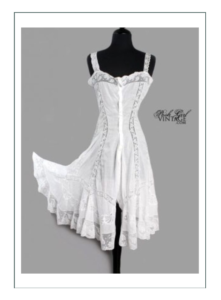
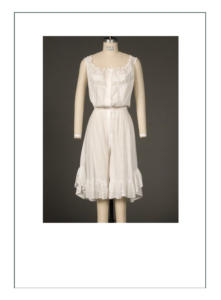
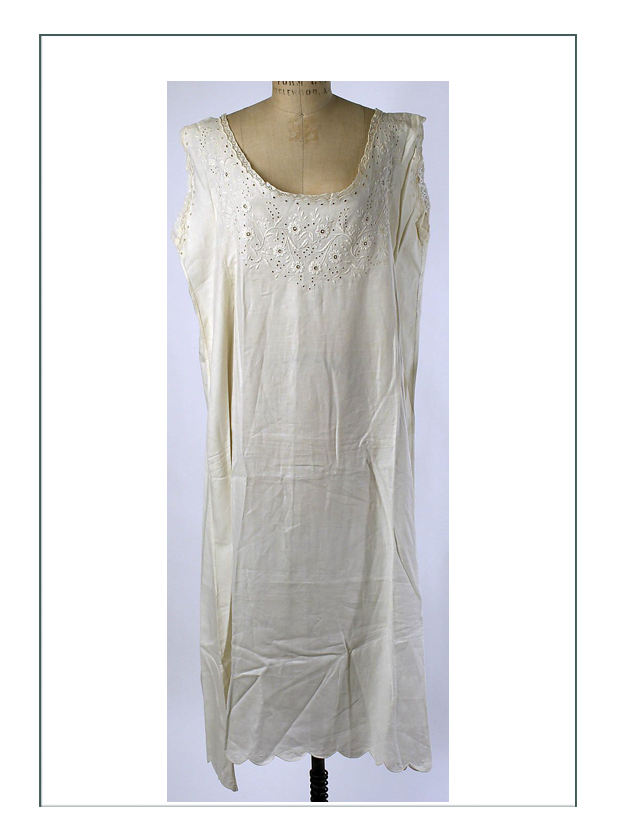
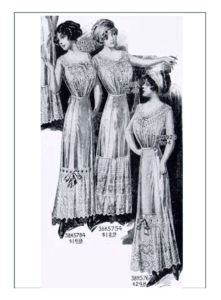
Specific to the character is a “Slip”. These extant examples were used to design this character’s:
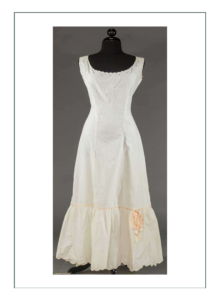
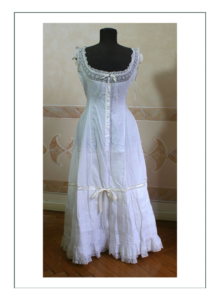
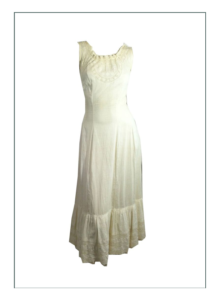
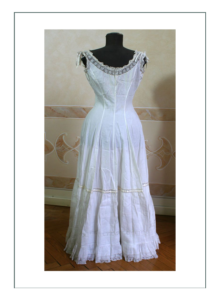
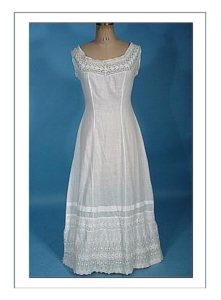
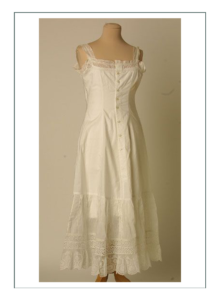

Western Skirts
The western split skirt is obviously for western riding a horse astride, although many women, particularly the daughters of wealthy ranchers and European investors, still rode sidesaddle. Caroline Lockhart rode astride, and there are photos of her in this type of skirt. We could build this exactly as is, but have selected a “going to town” depiction for now. This can be made at a future date to expand her wardrobe.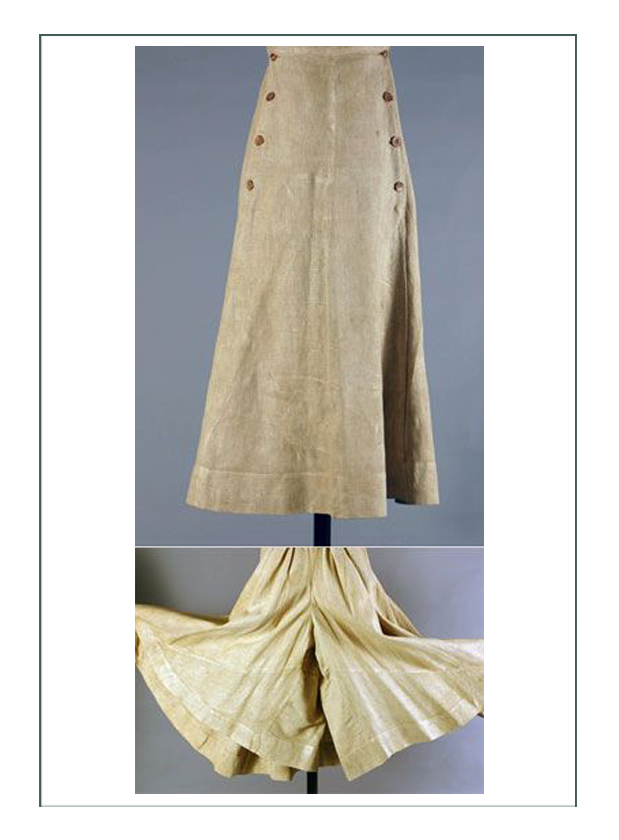
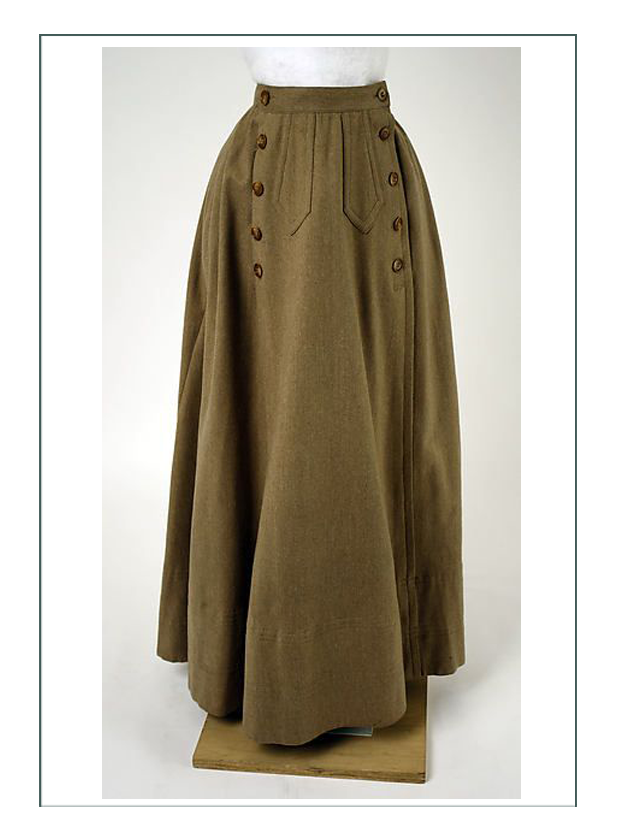
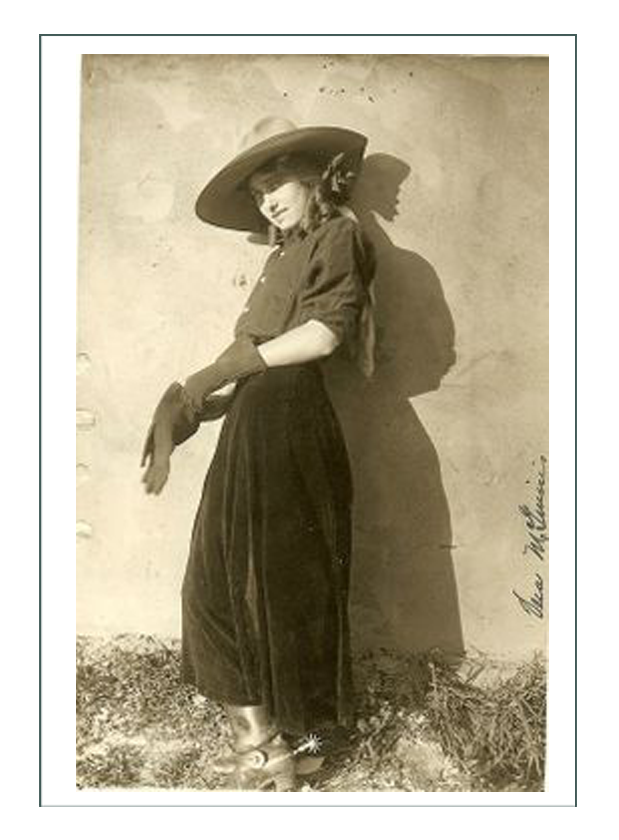
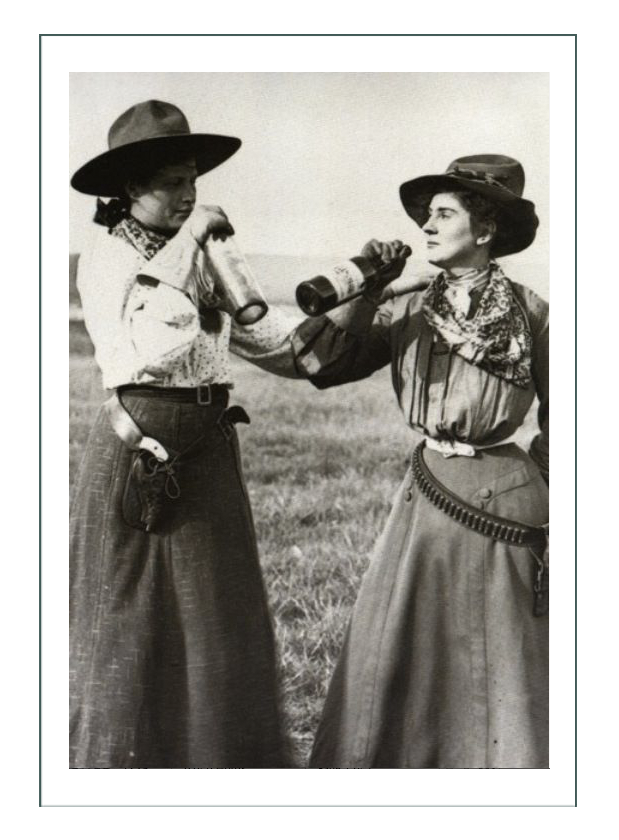 Eastern influenced Western Skirts with blouses
Eastern influenced Western Skirts with blouses
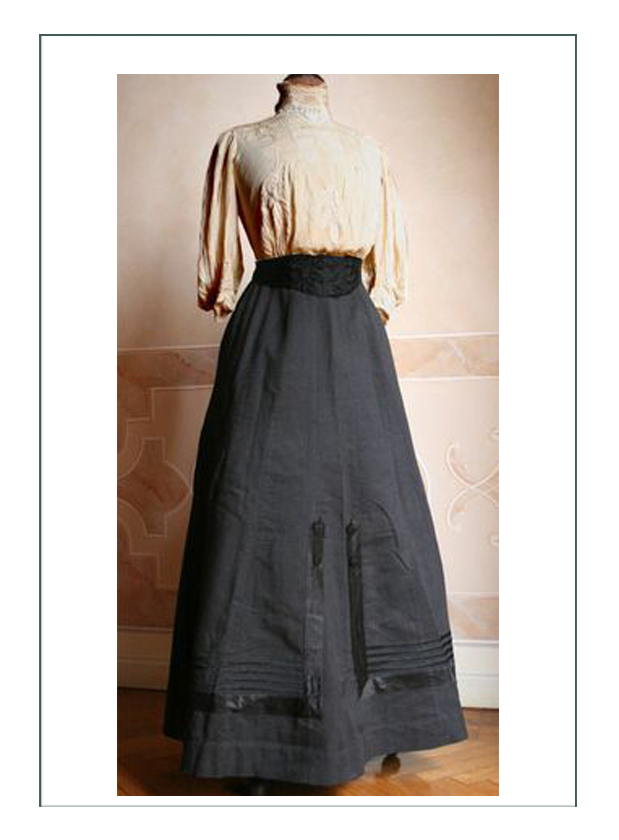
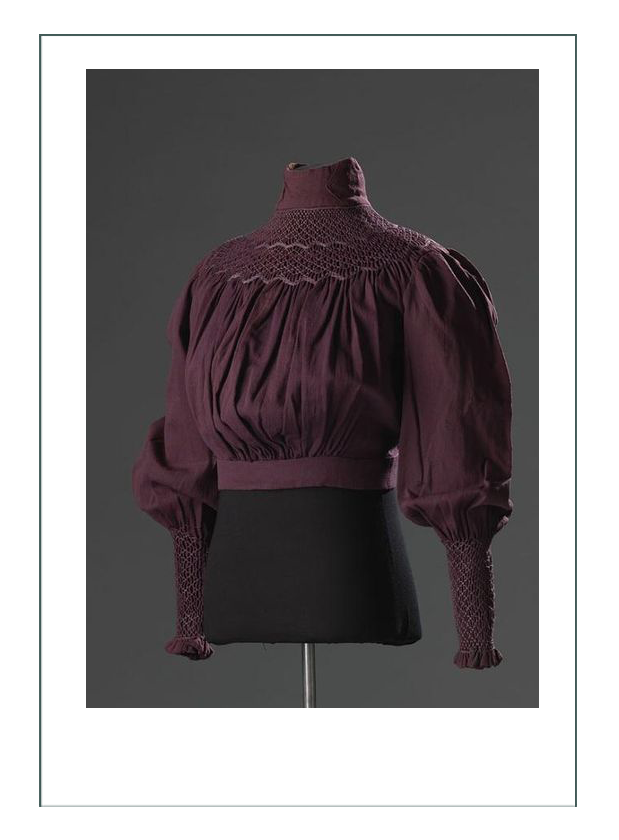
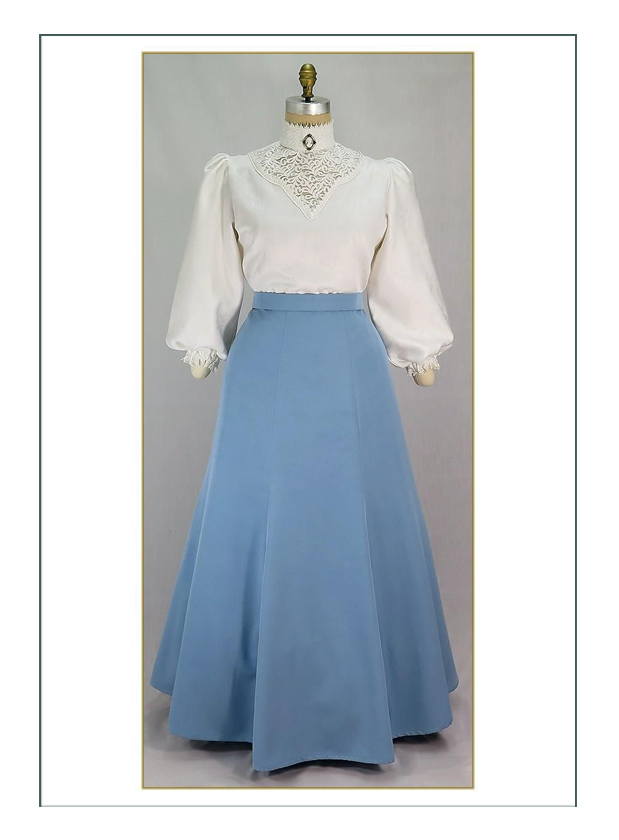 Edwardian day dresses western styling
Edwardian day dresses western styling
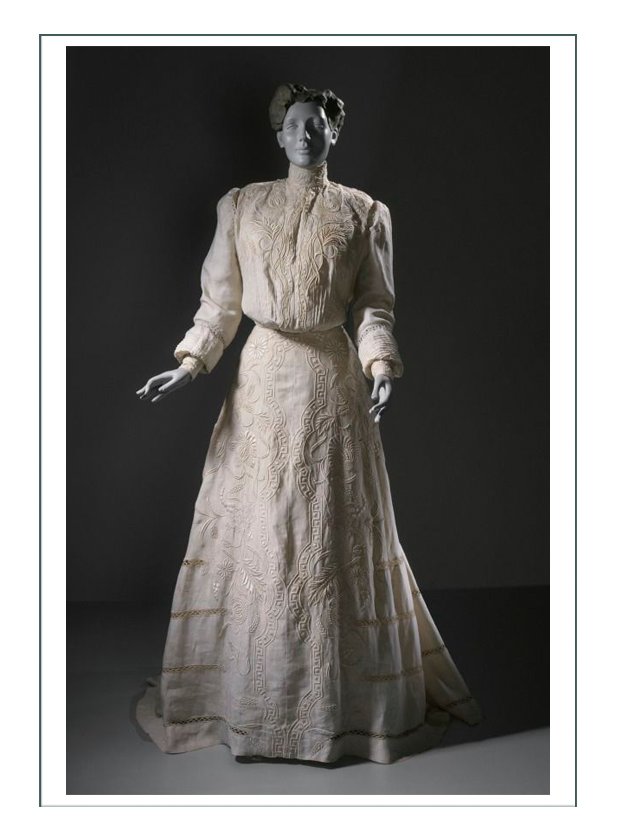
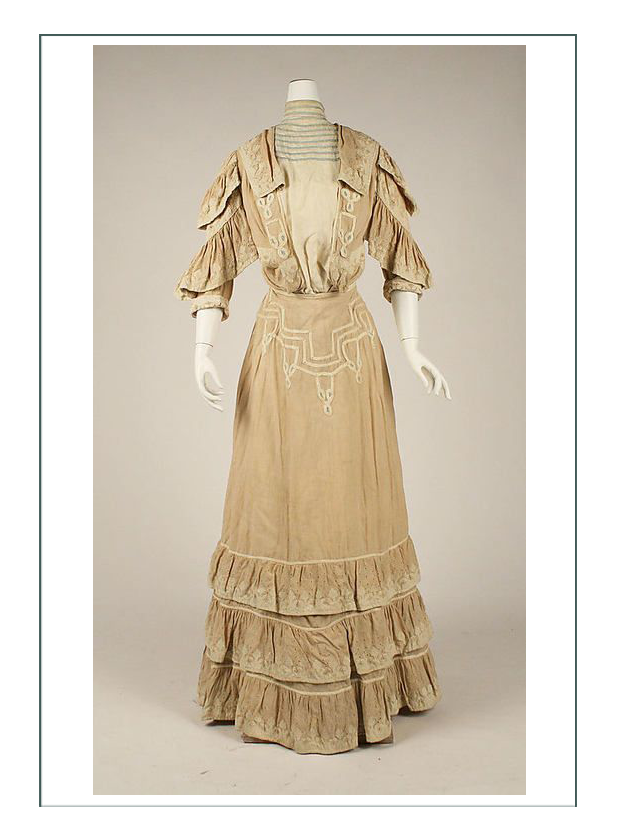
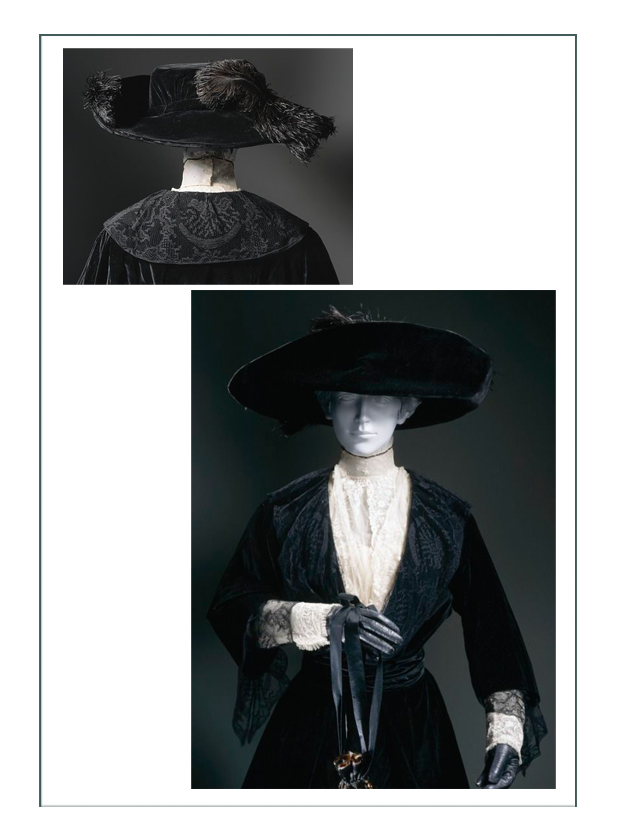
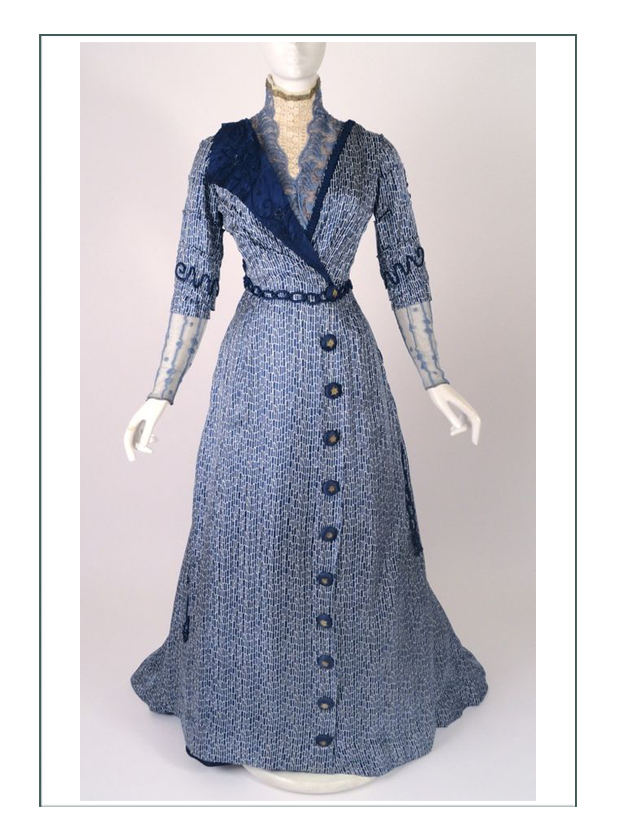 Era 2 piece suits with blouse Western styling
Era 2 piece suits with blouse Western styling
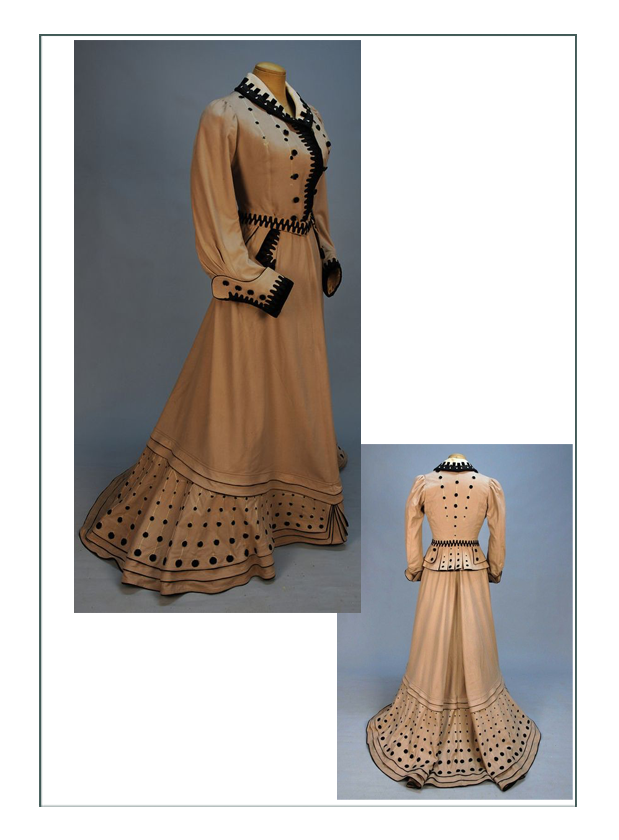
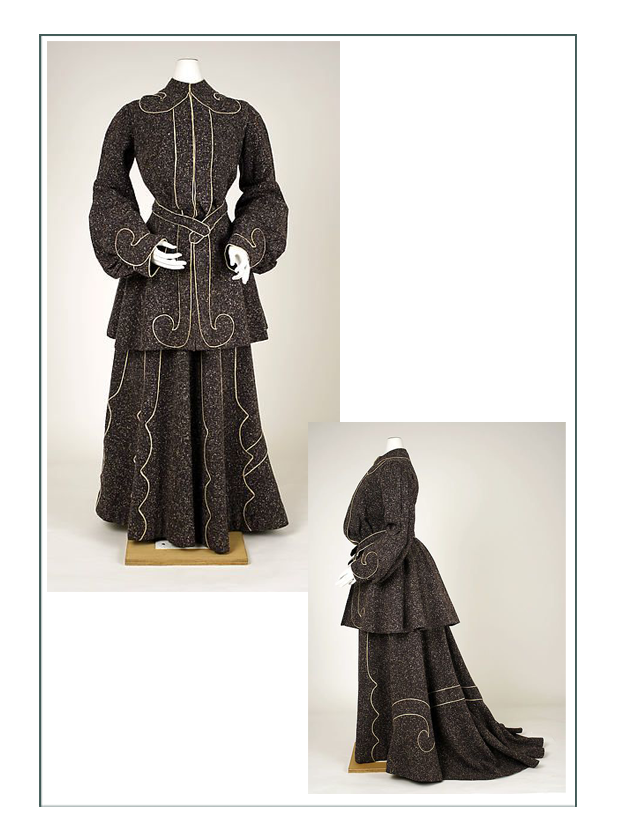
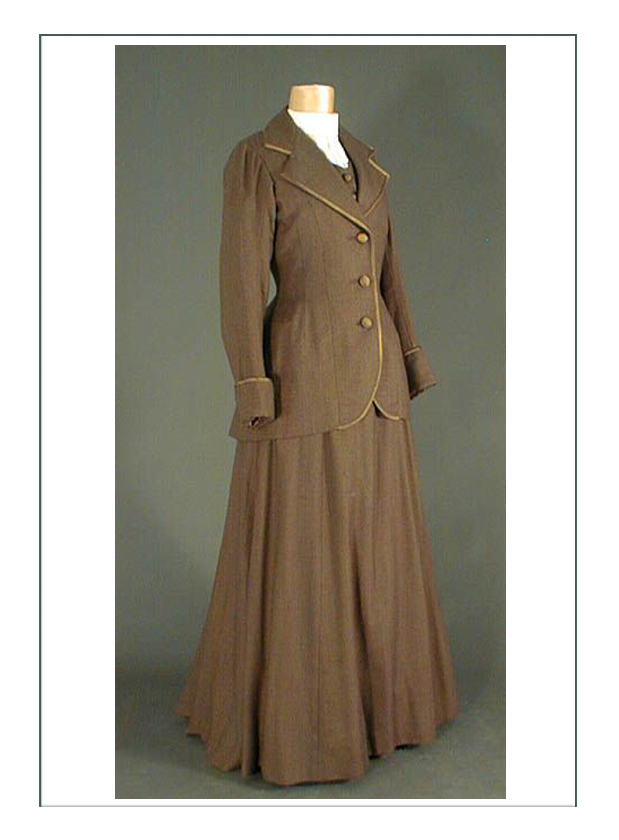

Ideas for construction
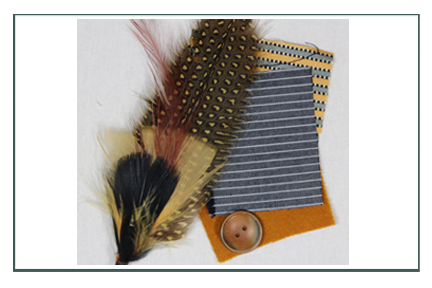
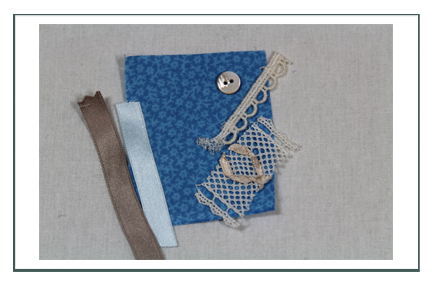
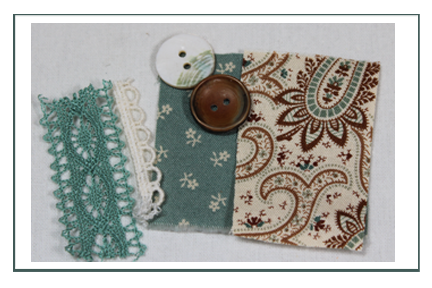
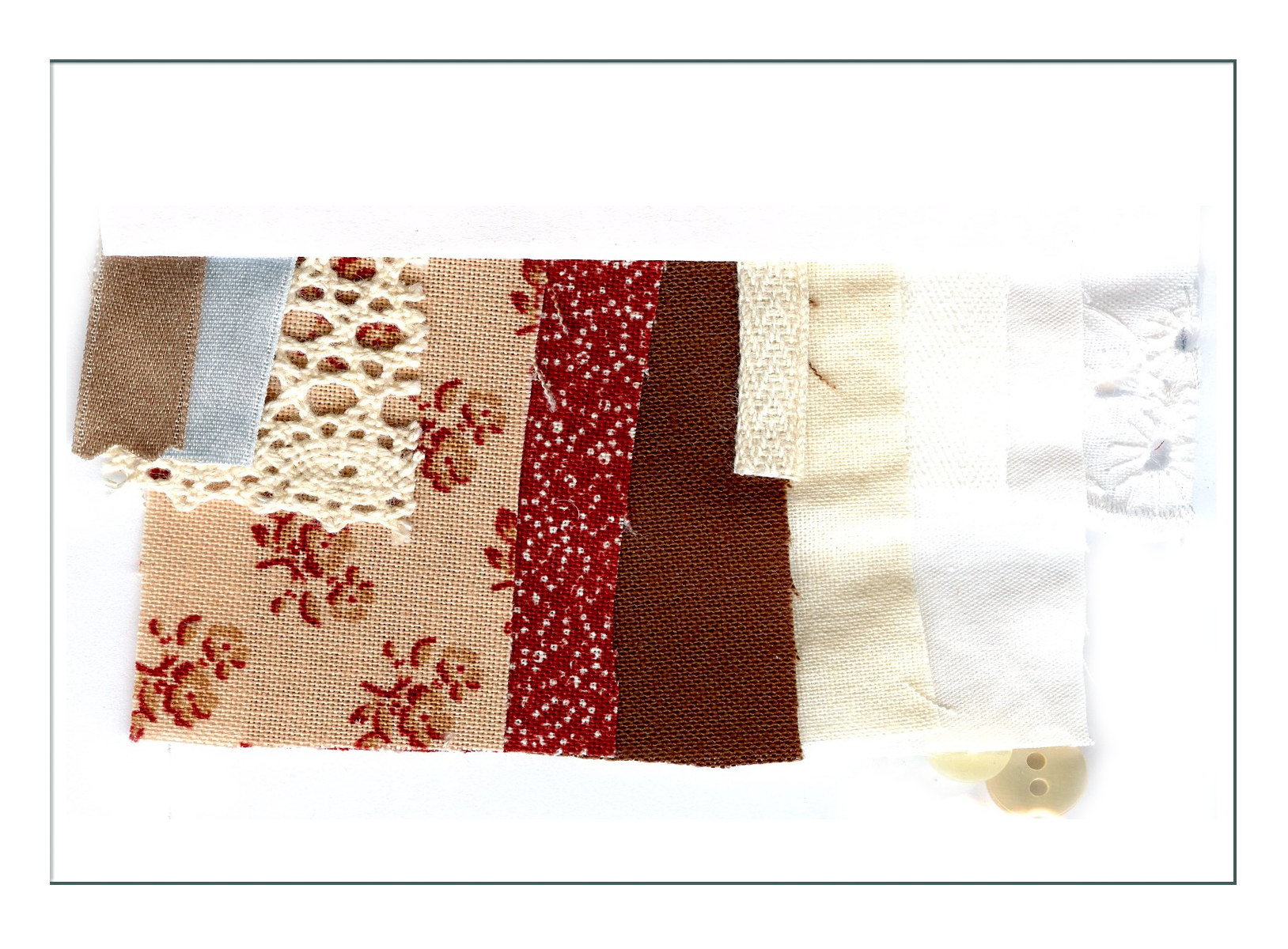
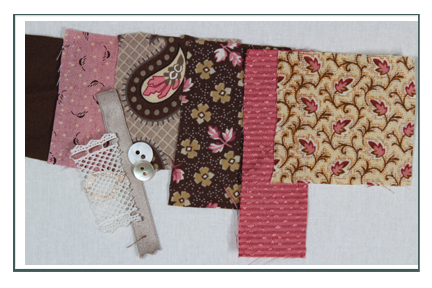
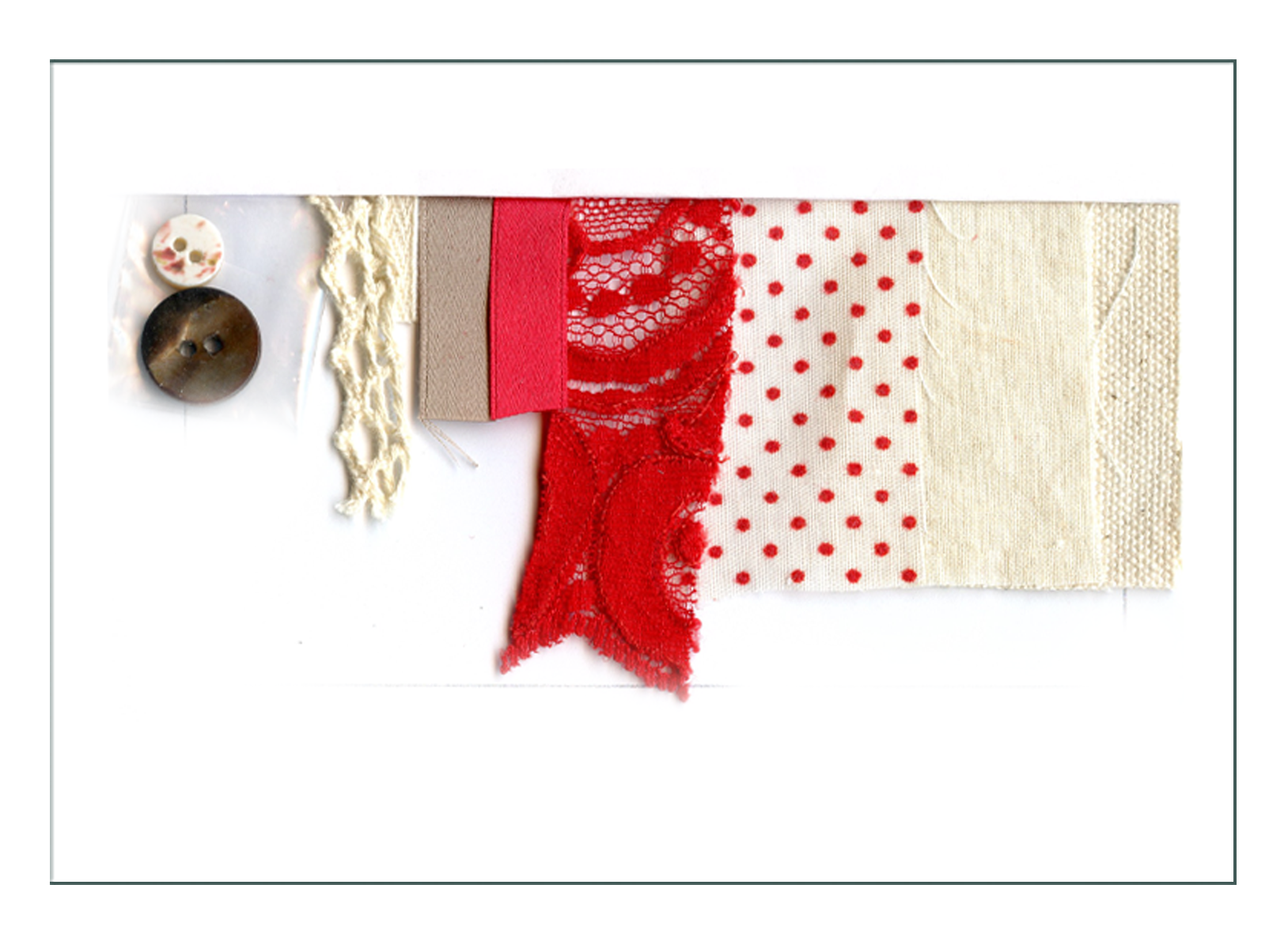
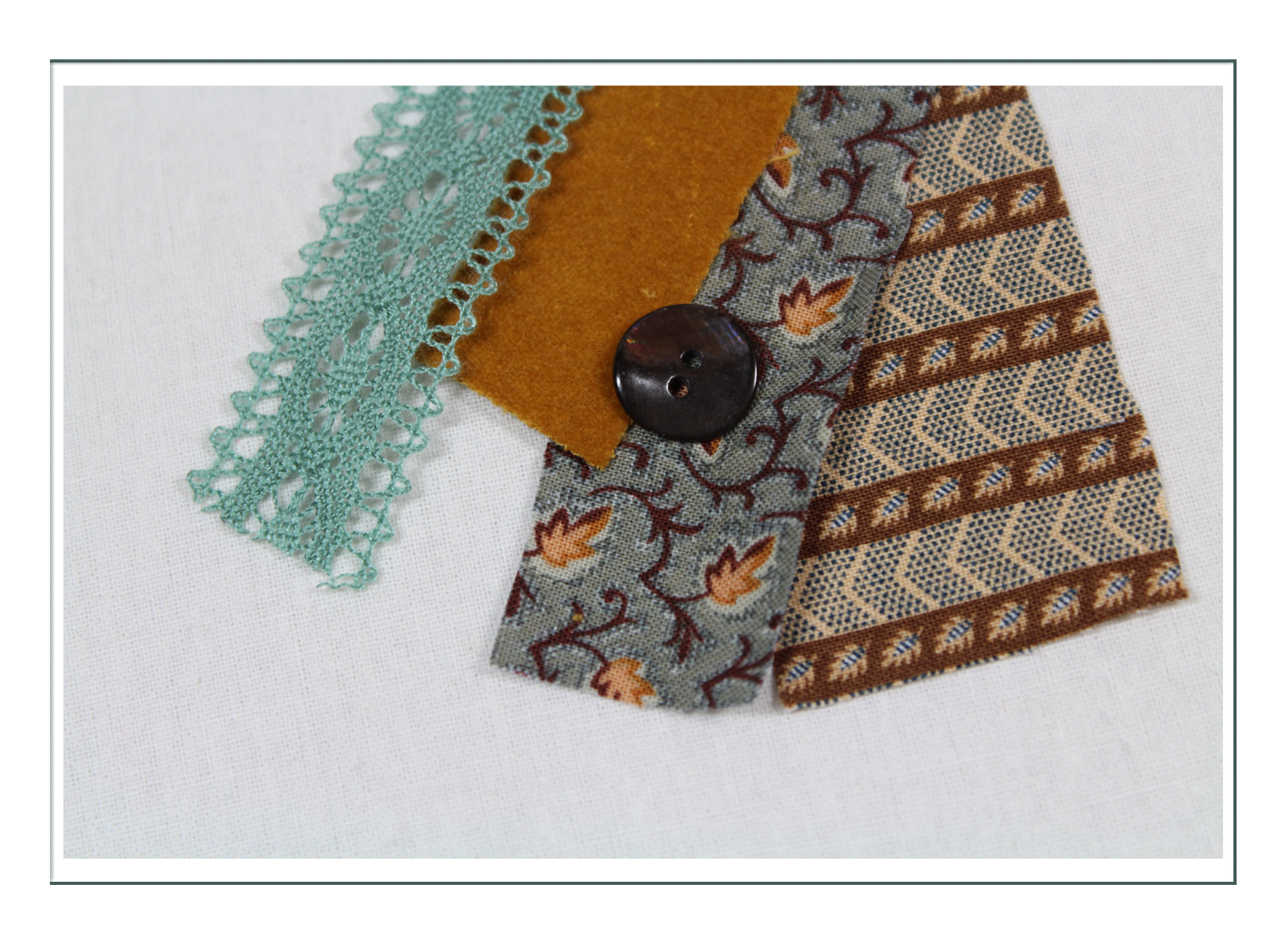
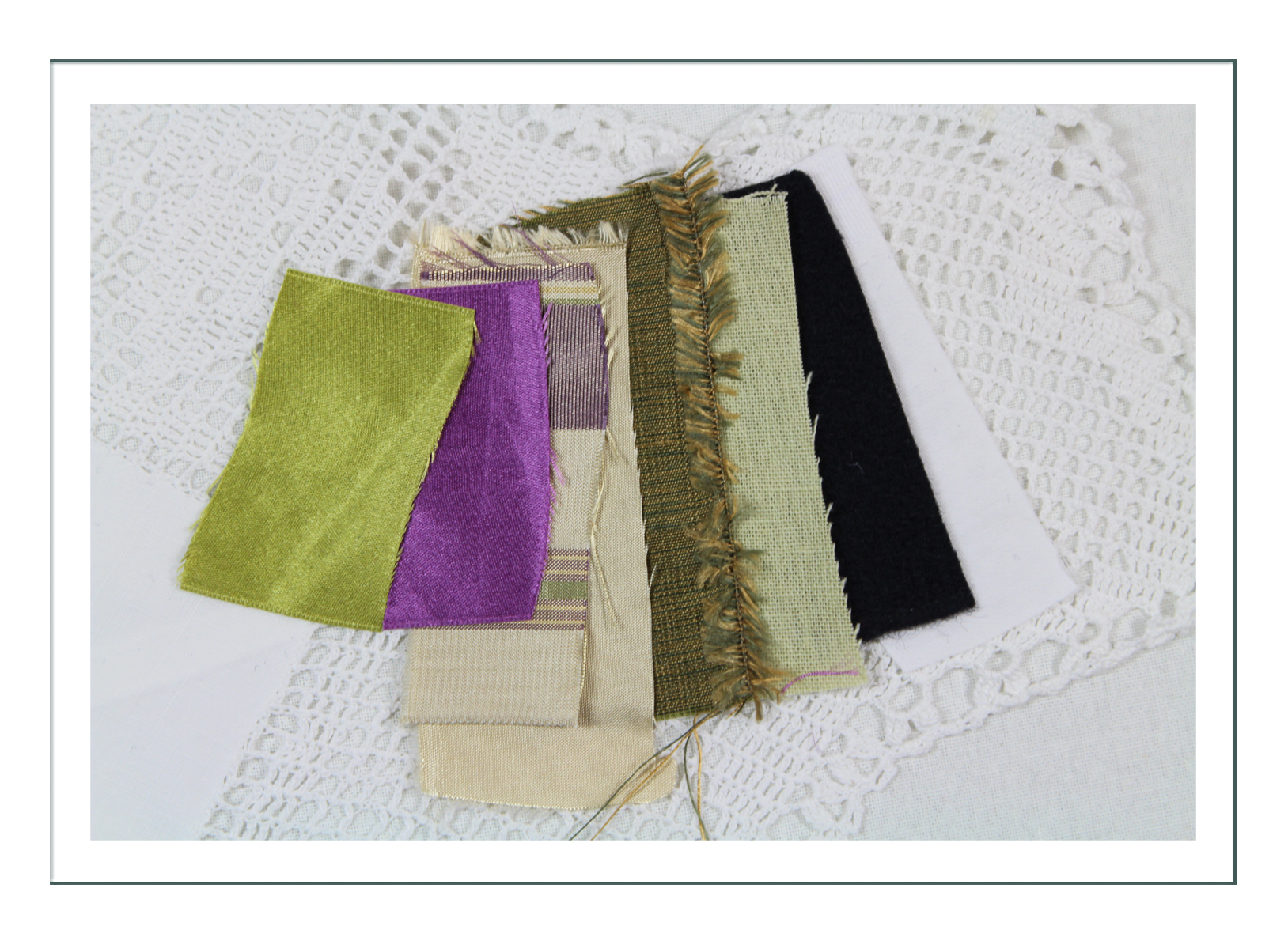
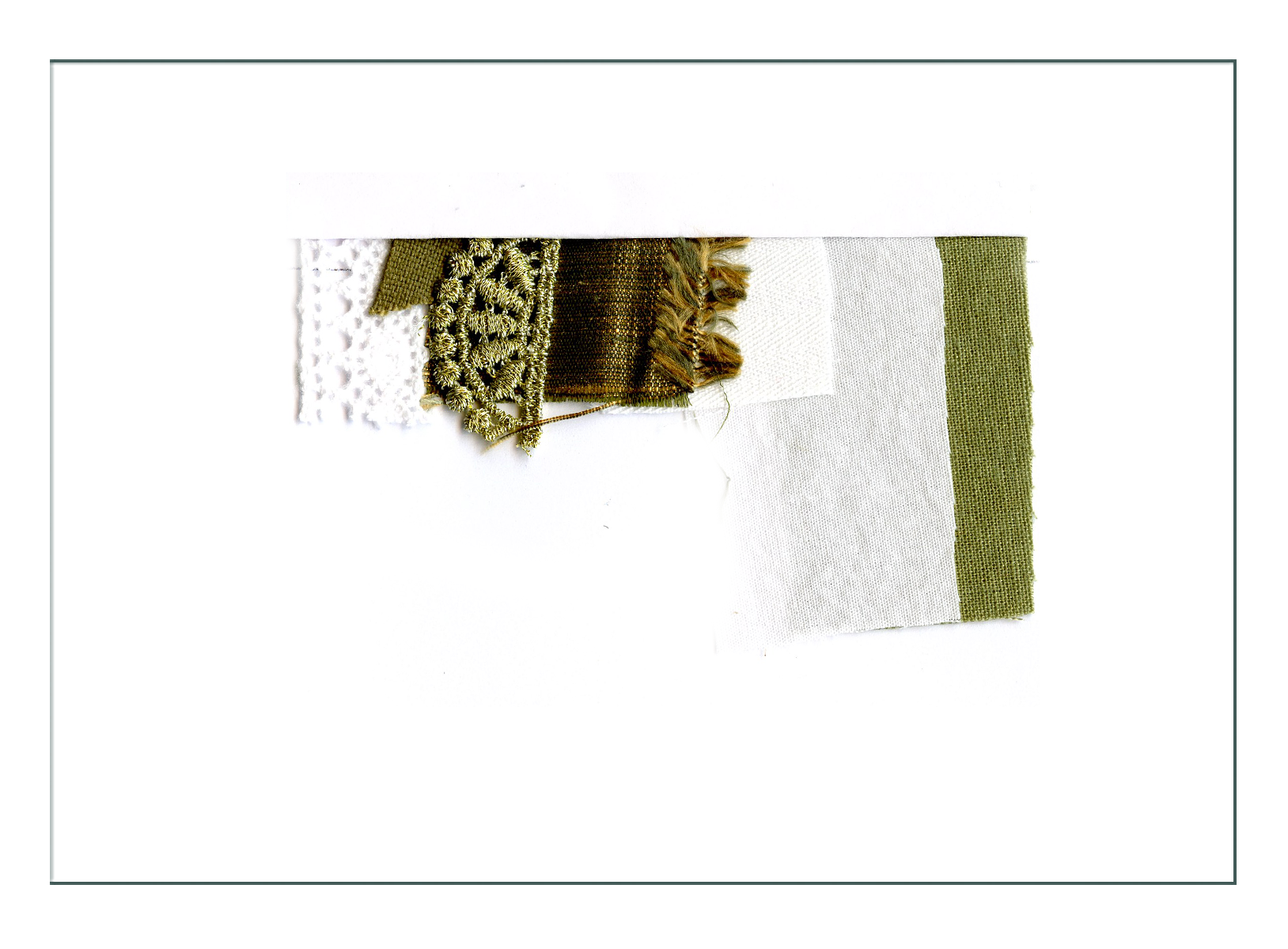
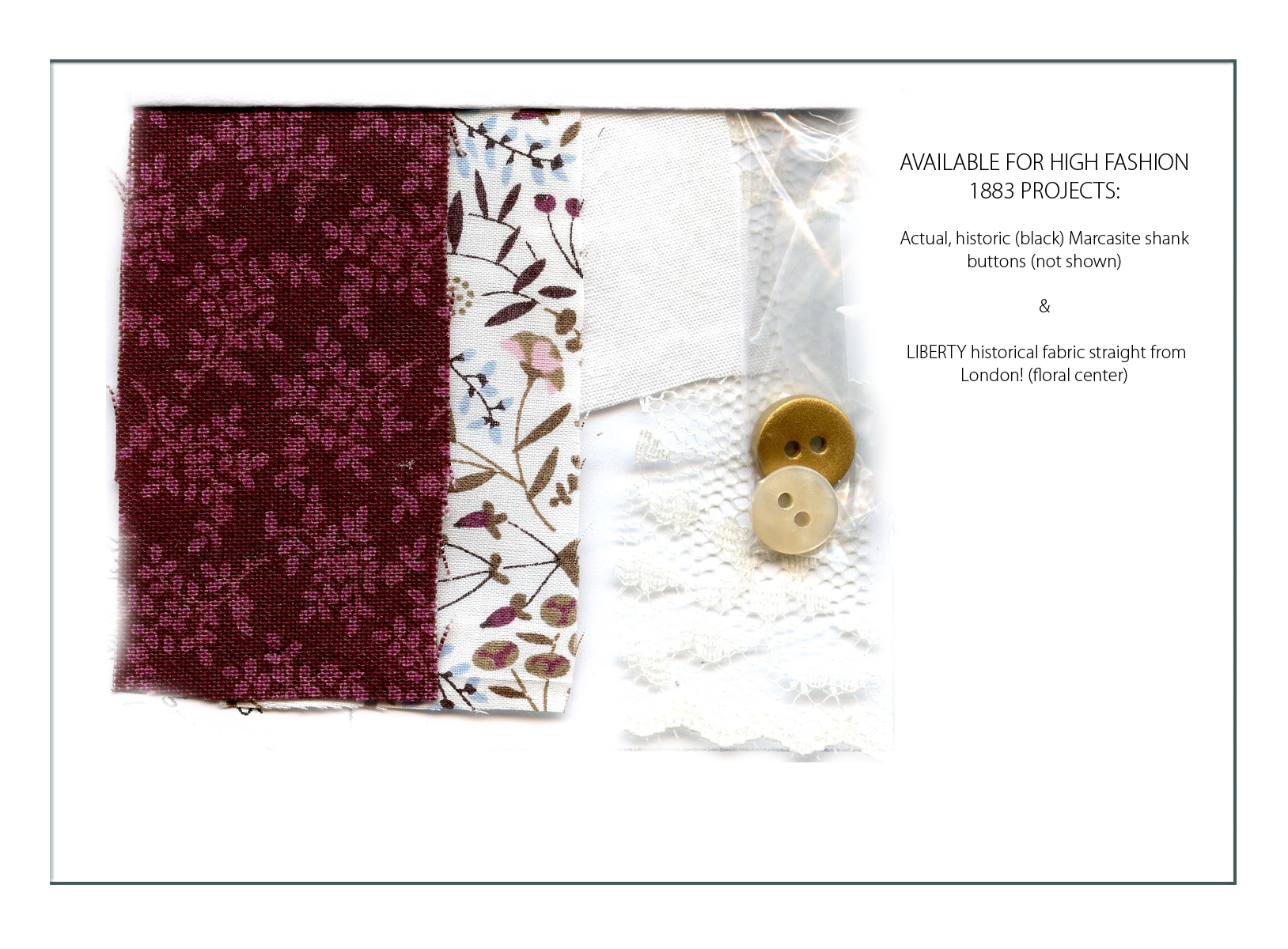
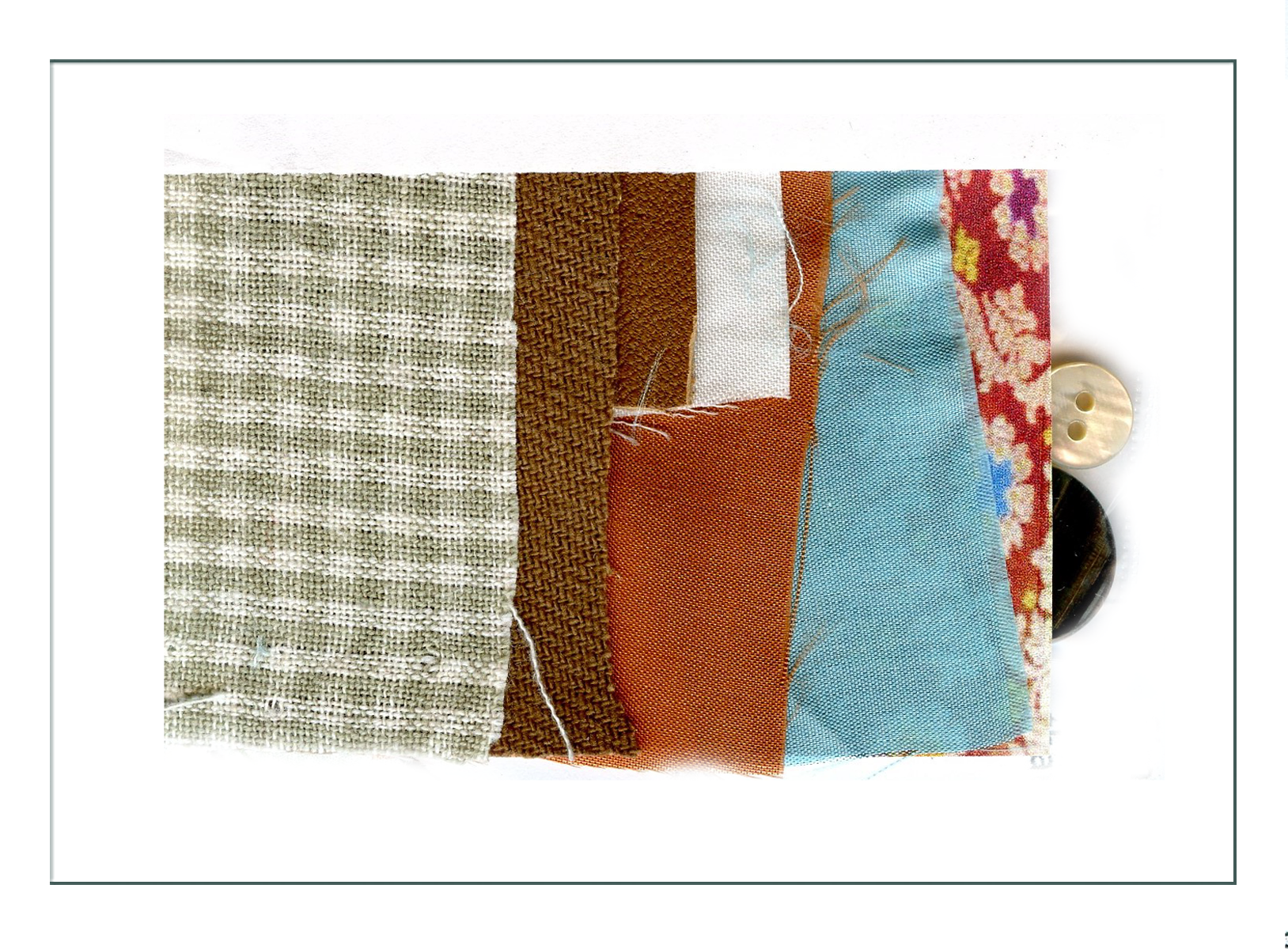
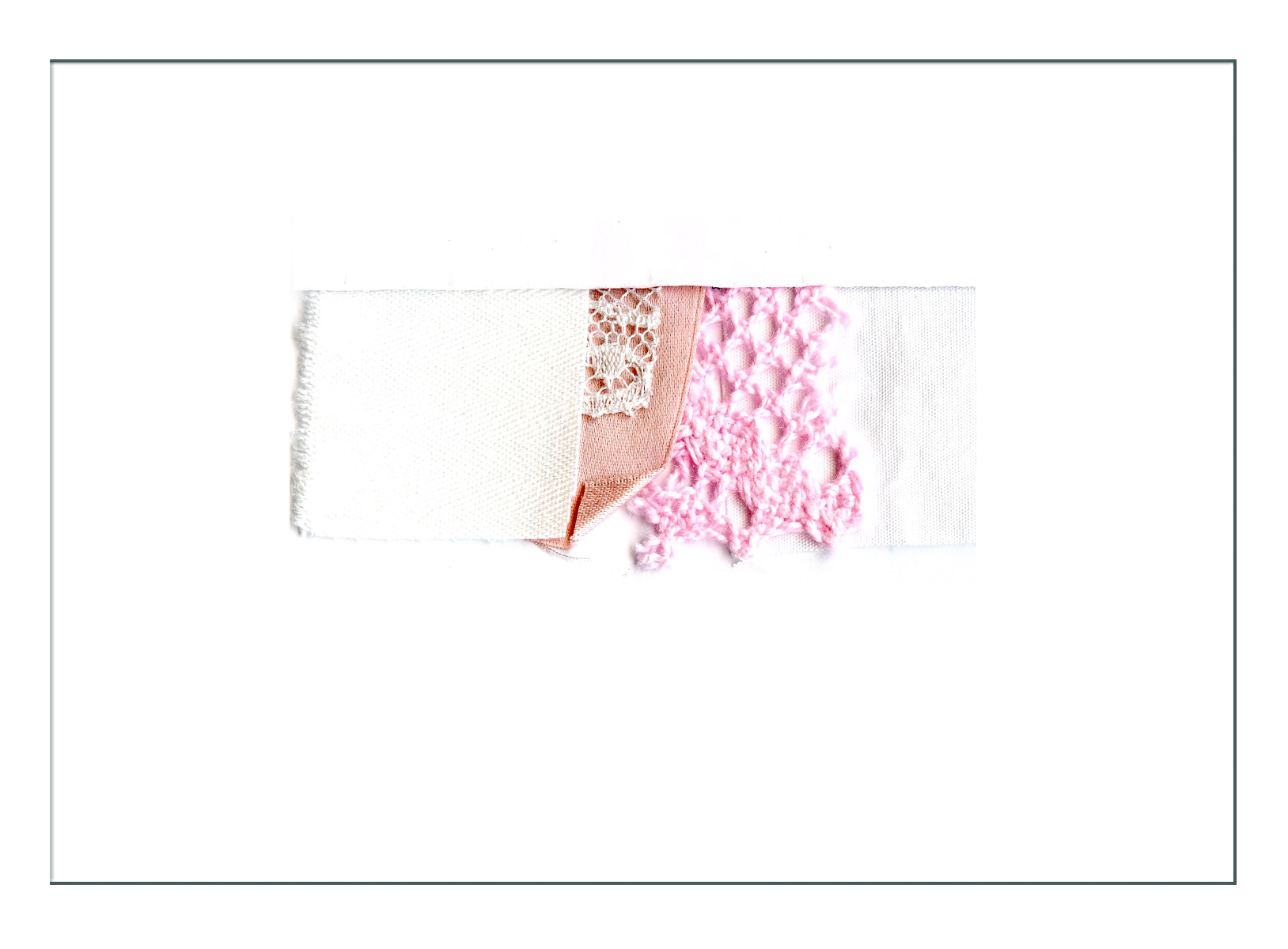
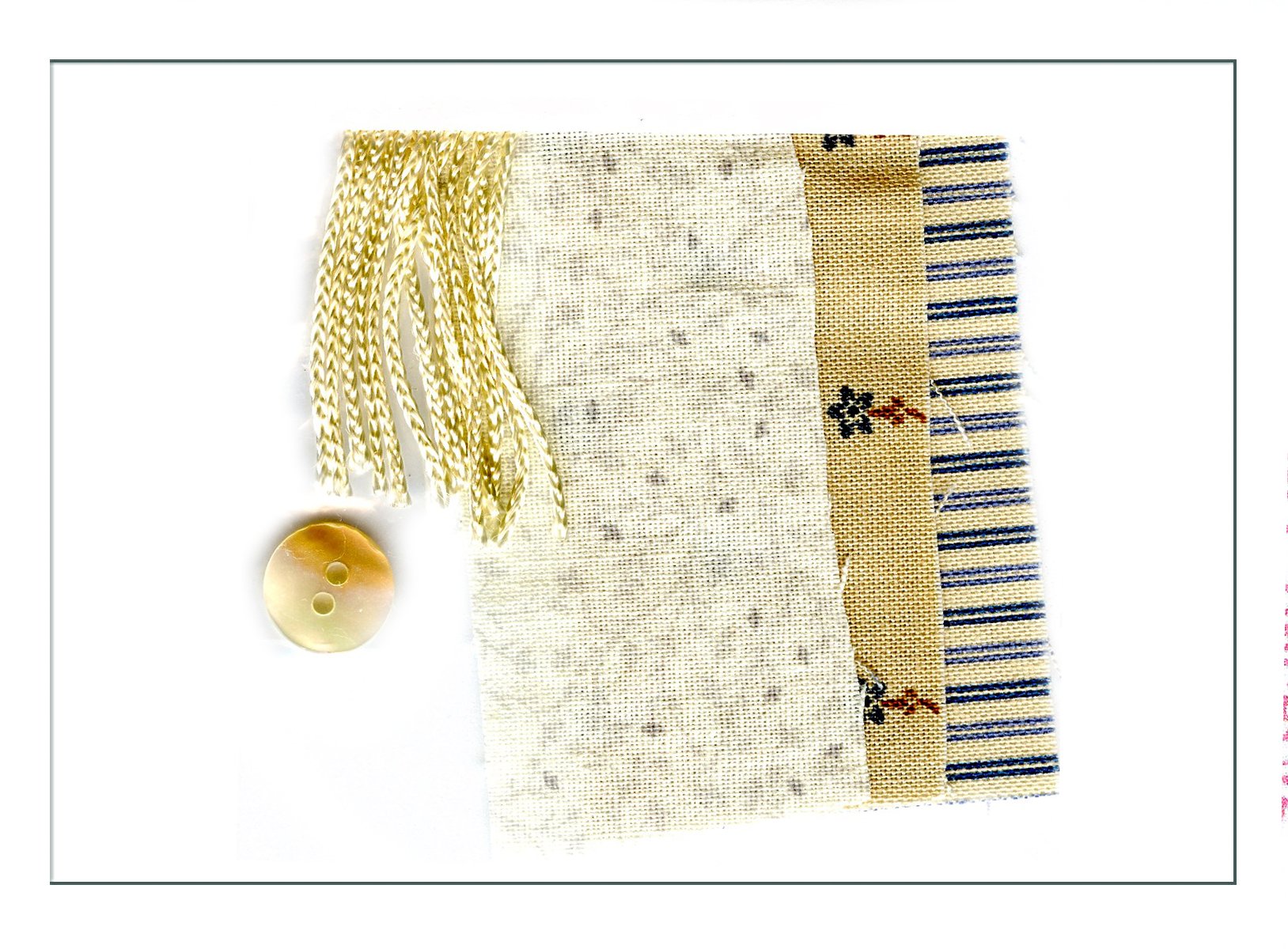
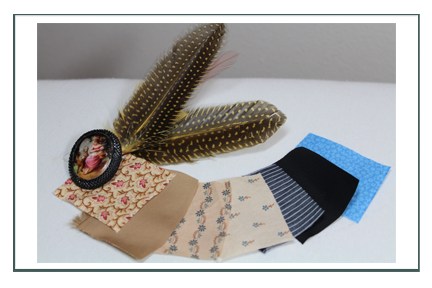
Other fabric ideas & final selections continued on main page

Final sketches are on the main page. They incorporate the discussions and analysis of the prior pages. To summarize final decisions for this starting depiction:
- “Going to Town” western interpretation of a suit Caroline would wear to a business meeting
- Western adaptation of undergarments – simplify and make possible to dress herself
- Able to ride a horse – maybe – the long corset will be difficult
- Focus on the corset of 1910 for the correct silhouette
- Next focus correct undergarments
- Suit will use fabrics and notions a woman in the west could get and have a woman in town make for her and/or what she could get from a catalog
- Everything would fit -but not necessarily be form fitting (e.g. comfortable)
- Be able to switch accessories for depiction
- Keep cost down – as Caroline would (means cottons and current fabrics – not silks and reproductions if possible)
- Use readily sourced western wear that indicates Cody and Wyoming
- Use authentic as they are easily found, but only durable and well fitting examples such as gloves, boots, spats, hats, jewelry
- Add some fun “twists” for personality – like the bulldogger rodeo tie or thin leather necktie a man would wear.
INTERESTING QUESTION
That reminds us of one interesting dilemma with this character undiscussed that needs to come out in the final design. This is a woman who started the rodeo which still exists today, could run a bar and drink with any man, rode a horse and ran a ranch, wrote lewd books and didn’t care who knew, and ran multiple businesses. She grew up in a brothel (or not..) and started out wearing the height of fashion as she came from the northeast.
The question for the interpreter to answer is – whey would she still want to dress in the highest possible fashion as a WOMAN (eg – keep her legs covered and Edwardian blousewaists, etc.) when she was basically living a man’s life without fear of condemnation for her ACTIONS?
In other words – why did Caroline Lockhart intentionally dress in high fashion of a woman, when she was living as a man? We think the answer is in her childhood and younger days for which there is little information. Our solution will be to include men’s accessories, comforts, and conveniences within the “trappings” of a 1910 woman.
You will note the final design DOES look an awful lot like men of the day – and we didn’t plan this – found these photos after the design was done and built:
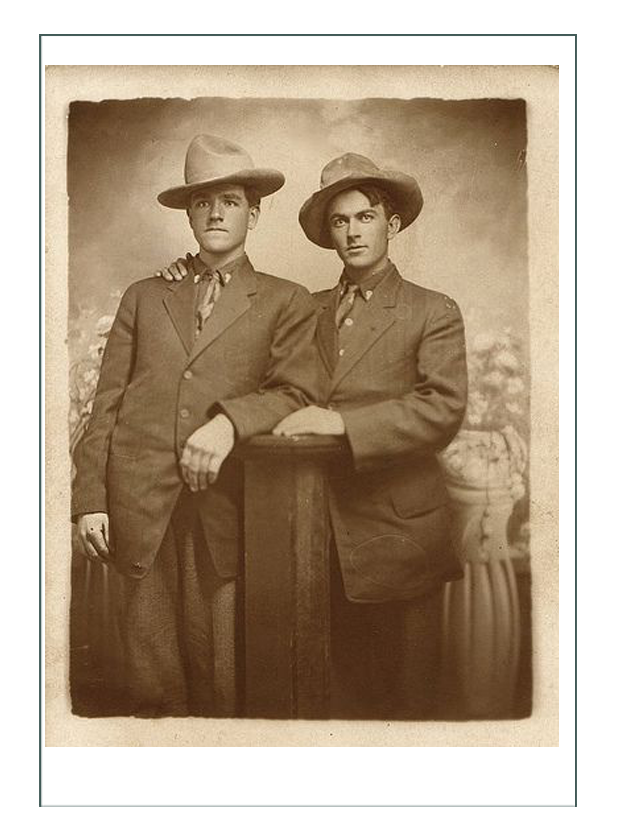
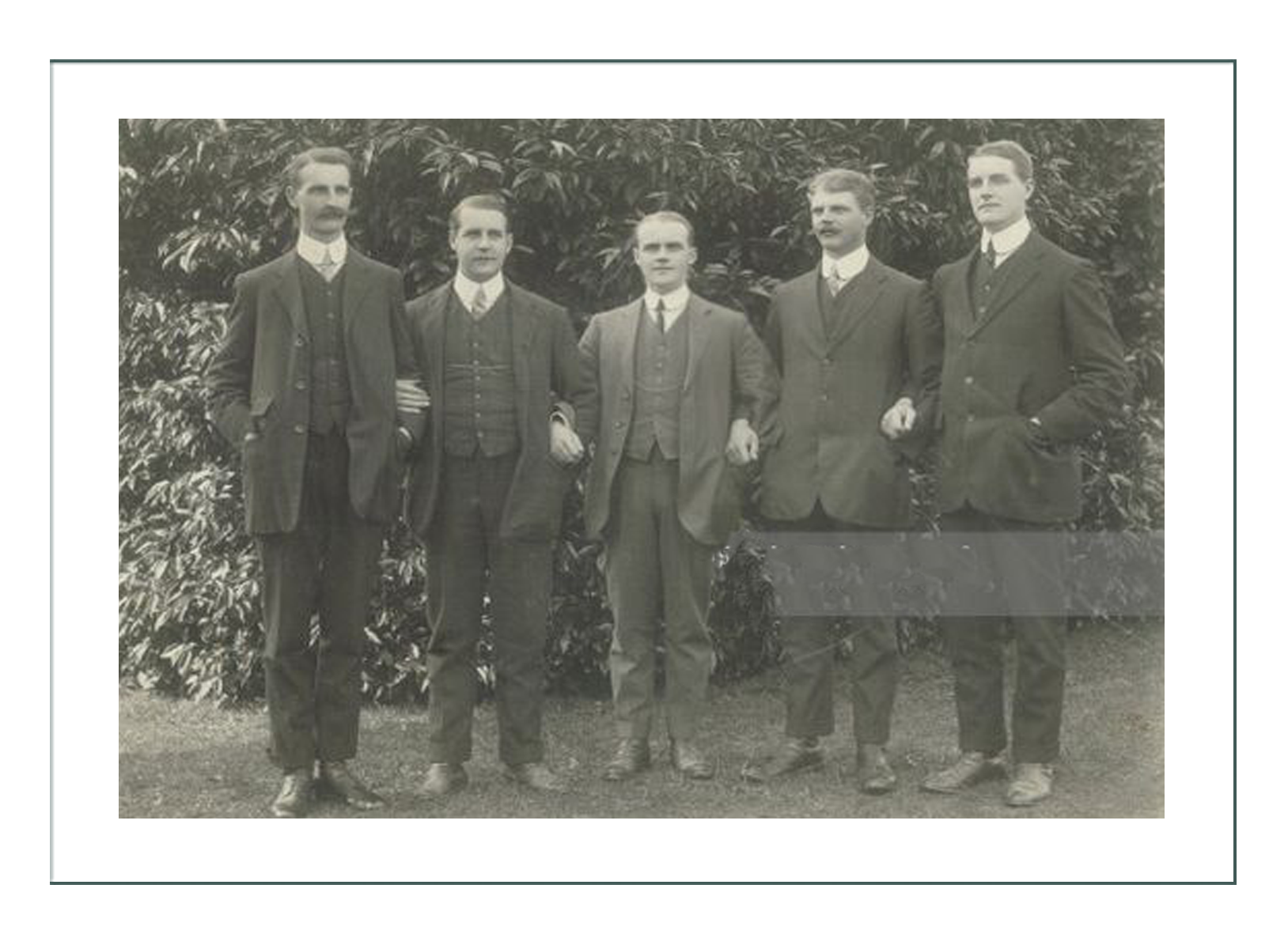
Click here to go to Carol’s Lockhart main page with the finished project (next)
Click here to go to Carol’s Lockhart Historical Context page
